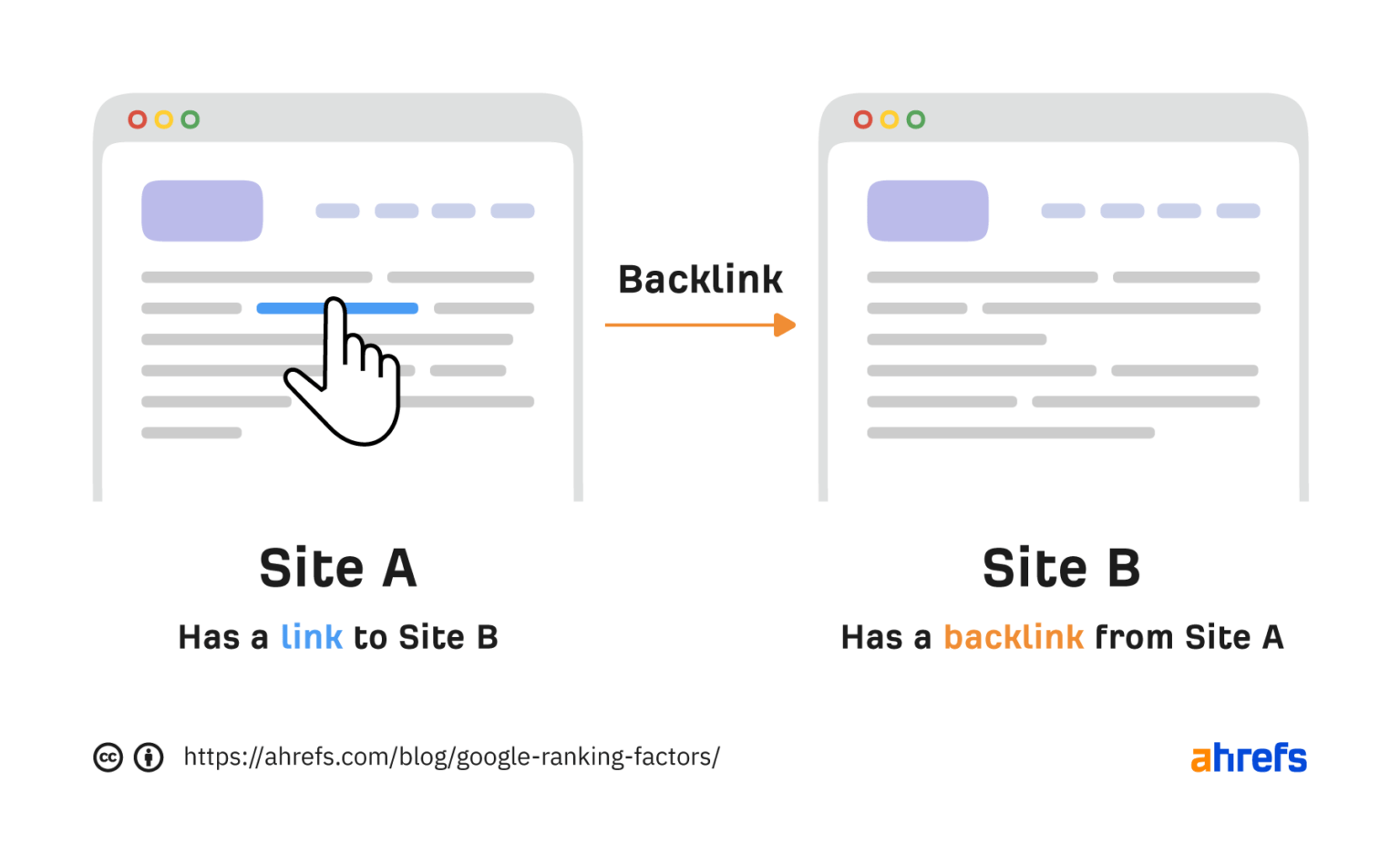Hey, welcome to your actionable guide to getting white-hat backlinks.

A backlink is like a recommendation from one website to another. It’s when one website puts a link on its page that leads to another website. Search engines see these links as a sign that a website is trustworthy or useful. The more quality backlinks a website has, the more likely it is to show up higher in search results.
Black hat backlink tactics are all about manipulating the system to get backlinks quickly, bumping up the DA or DR (which are basically pseudo metrics), without actually showing Google that they have value, often prioritizing quantity over quality. These practices violate search engine guidelines and can get your website penalized or even banned.
Since we don’t want to get banned, we’ll just stay focused on white hat backlinks.
However, There’s a grey area where some tactics might bend the rules a bit.
For example
- Guest blogging on low-quality sites: While guest blogging is a white hat tactic, if you’re doing it on irrelevant or spammy sites or sites with Low Traffic/Mid to High DR, it might be seen unfavourably. But again, these techniques are helpful for low DR sites with low budget, so you sometimes can’t completely ignore them either.
- Directory submissions: Submitting your website to relevant online directories can be helpful, but mass submissions to low-quality directories could be considered a grey hat if not relevant.
So to get maximum backlink juice we’ll focus on white-hat backlinks.
As a simple rule. Very High DA/DR sites with low traffic are the ones you should be alert about & can put in the Black hat sites bucket (but not the only one).
But, you might be asking what’s a actionable white-hat backlink?
White-hat backlink refers to acquiring backlinks while adhering to Google’s webmaster guidelines, which means they’re built naturally, helping reader & doesn’t feel artificial or any trickery.
White hat link building focuses on getting backlinks from trustworthy and respected websites using tactics that adhere to search engine rules.
There are many types of actionable white-hat backlinks, but can be classified in 4 types:
Natural Backlinks: These are the gold standard of backlinks and occur organically when other websites find your content valuable and informative enough to link to it without any solicitation from you.
Link Exchange: This practice involves two websites agreeing to link to each other to boost their search rankings. Historically, link exchanges were a common way to build backlinks. However to find a perfect website and to reach out to them for backlinks is a long and time consuming process, this is were Linkly comes in by Inverting this funnel of link-exchange and giving you multiple A-B as well as A-B-C link exchange opportunities.
Guest Posting: This involves writing informative articles for other websites in your niche. Within the content, you can include a link back to a relevant page on your own website.
Broken Link Building: Though we don’t believe in this strategy because of its insanely resource intensive setup with unpromising conversion rate, but this strategy involves finding broken links on websites relevant to your niche and creating even better content to replace them. You can then reach out to the website owner and suggest your content as a replacement.
Resource Link Building: This involves getting your website listed on relevant online directories or resource pages. These are websites that curate lists of helpful links for their visitors like a saas website would register on G2, Capterra, Truspilot etc. A local business would sign up on Clutch, or Yelp, Coding related website on github & stackoverflow. This is a subset of pillow link building.
With frequent Google algorithm updates, low-cost spammy tactics, like keyword stuffing, no longer work. So if you want to go ahead with black hat SEO, you might opt for tactics like building a private blog network (PBN). But building a PBN correctly is expensive (i.e., buying expired domains, dedicated hosting, private Whois, etc.), is technical, has no guarantees of working, and can even cause you to be penalized.
Why go through the trouble of getting backlinks
To quote Ahrefs on their 2022 study –
“In 2016, Google’s Andrey Lipattsev confirmed they’re one of Google’s strongest ranking factors.
But not all backlinks are equal. Some move the needle more than others.
Nobody knows what makes the perfect backlink, but Google says you should build them from other prominent websites on the subject.”

Another Ahrefs study from 2018 states “…there is generally a positive correlation between the number of newly-acquired backlinks and the position of that page in Google.”

Where can you get backlinks from?

he irony of link building is that Google denies to do paid backlinks and link exchange and they are the most impactful actions you can take to build backlinks at speed, otherwise will be like a slow steady approach where you write content, a lot of them, of the quality people link to and then they are picked up over time, not tomorrow, but takes a few months to get sizeable number of backlinks.
So, at Linkly, we just shun the approach of veterans and give a list of ways to build white hat backlinks. Approach that works, not just on paper, but actually, without taking up days of your week or having to manage a VA to do that.
Actionable Ways to Build White Hat Backlinks
Here’s how you can get backlinks for free.

- Link exchanges is one way to build backlinks where 2 websites of similar niches and DA but non-competitive give each other backlinks. It’s a barter deal of backlinks.
- Write content that ranks – Skyscraper content has now changed to a human content. Write content involving humans, proprietary data or something that an AI cannot write. You give AI a topic, there would be some tool out there that can generate 3k word article & link builders know that. Stats are the game, build blogs around stats because when someone uses a stat, they have to link to it to gain credibility. Basically, writing content that provides immense value will automatically earn you backlinks.
- Few examples –
- State of <industry> in <current year> – Where you talk about the state of your niche or industry in the year to make it more clickable and linkable. E.g. User published this blog https://userp.io/state-of-backlinks-for-seo/ after conducting a small study of around 800 SEO and now they have almost 1.7k backlinks from this article alone.

- Consumer survey summary
- Insights on your proprietary data
- Predict trends using data, feedback, your insights like This is what Top organic tool founder says about how link building change in 2024
- Quotes collection, infographics, proprietary images are also very low key ways to generate slow passive backlinks but are effort intensive but can be created quickly using AI now.
- Study your competitors’s most linked page and produce similar content including what they missed. This is what’s known as creating a linkable asset. You can easily see any website’s “most linked pages” with the help of Ahrefs Site Explorer. The report you’re looking for is called “Best by links”
- Get listed in listicles– Listicles are the best way to get eye balls in front of relevant people, because they came on the site to find that exact problem.
- Free Guest Blog– Guest blogging lets you contribute content to relevant websites, earning valuable backlinks that boost SEO and build your reputation as an industry expert. It’s a win-win for you and the host site’s audience who get fresh, informative content.Linkly also offers a “free guest blog” post to let you scour and connect with relevant websites of your niche.
- Earn Backlinks—that’s when people link to you naturally, without being asked. (Which is the best-case scenario.). This can be done through writing valuable content and publishing work that people refer to/give backlinks to while quoting. (just like we mentioned Ahrefs blog)
- Buy Backlinks—you can buy backlinks but that’s risky and sometimes costs more than $1000 for a single backlink. (Yes, we know the prices aren’t making sense, but it is what it is).
- Few examples –
Now a white hat backlink is considered ethical because it’s earned naturally. You create high-quality content that other sites find valuable enough to link to, boosting your SEO without any manipulation or risk of penalty from search engines.
How to get backlinks step-by-step actionable strategy
Pillow links: These are the foundational links that support your primary backlinks for greater SEO strength. They are often easier to obtain and include:
- Social media profile links
- Blog comments (ideally insightful ones)
- Forum signatures
- Directory listings
Link exchange: This involves reciprocal linking with another website (“I’ll link to you if you link to me”). While potentially useful, excessive link exchanges with shady websites can appear manipulative to search engines, so proceed cautiously.
Guest blog: As discussed earlier, this involves writing high-quality articles for another site within your niche. In return, you typically get a backlink in your author bio. This is a highly effective white hat strategy.
Paid links: This is the practice of paying for backlinks on other sites with higher DAs and DRs.
We hope this helps, you can also use Linkly to help you with the painstaking waiting time and scouring of websites for Link Exchange, Starting at just $39/month. Till then, Happy Link-Building.
